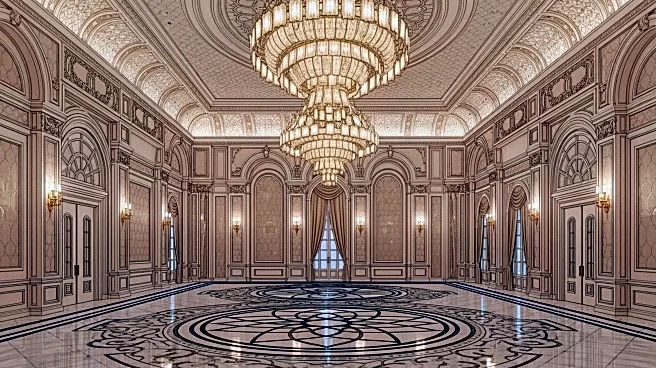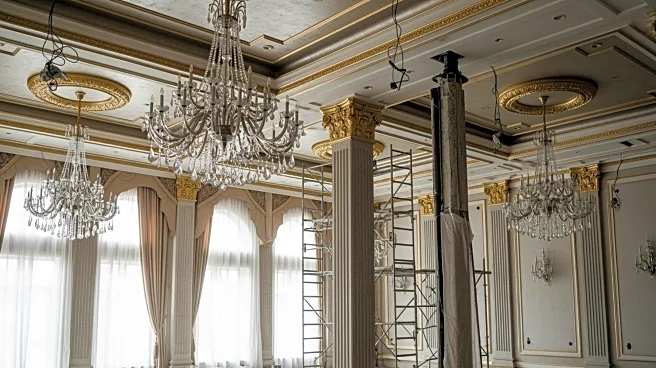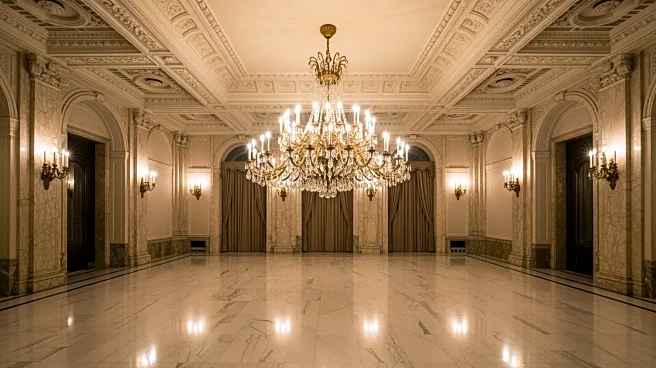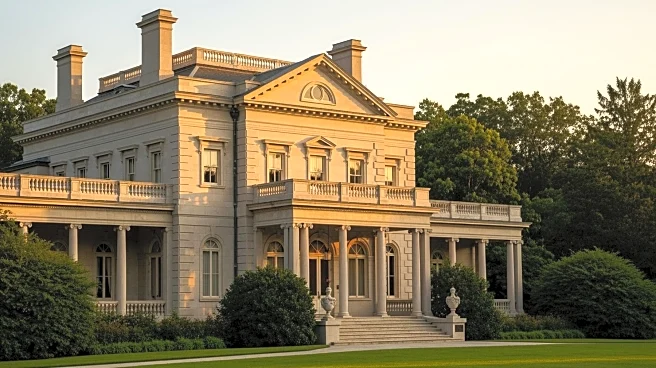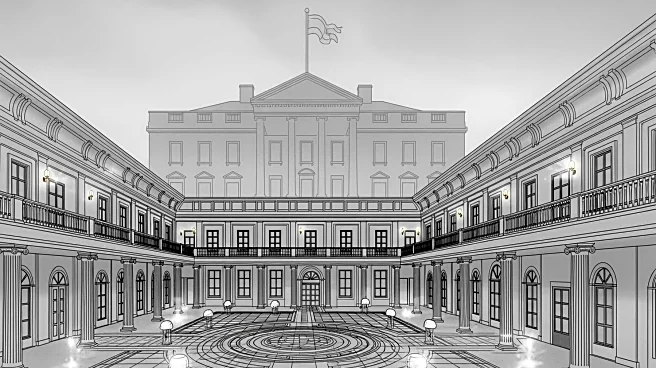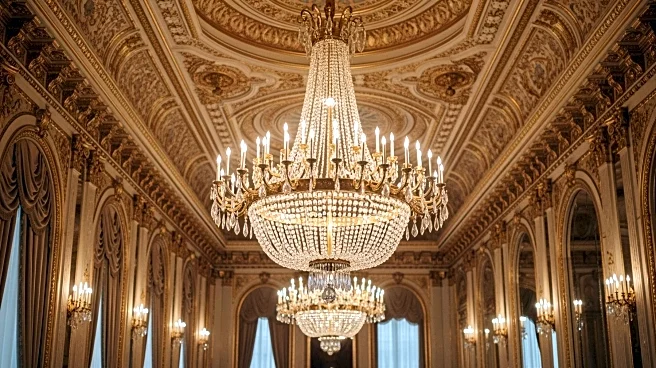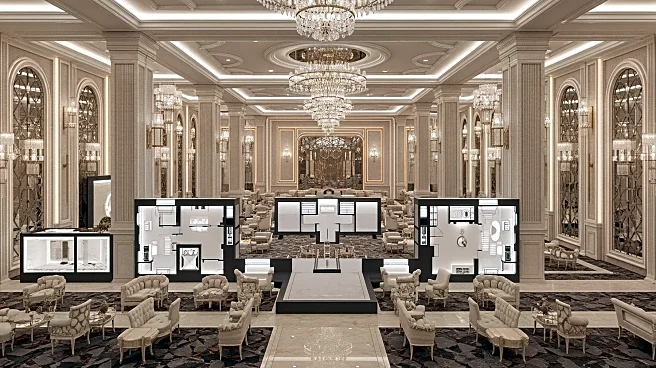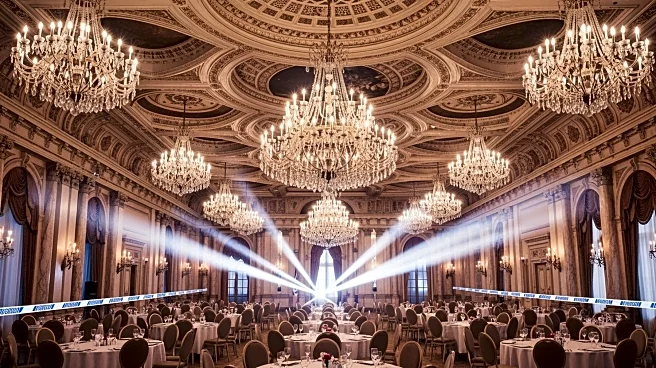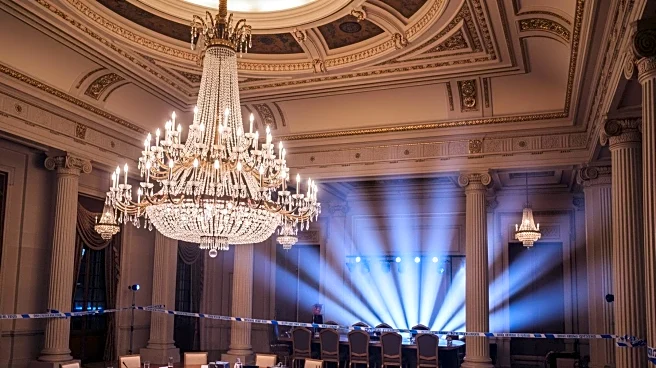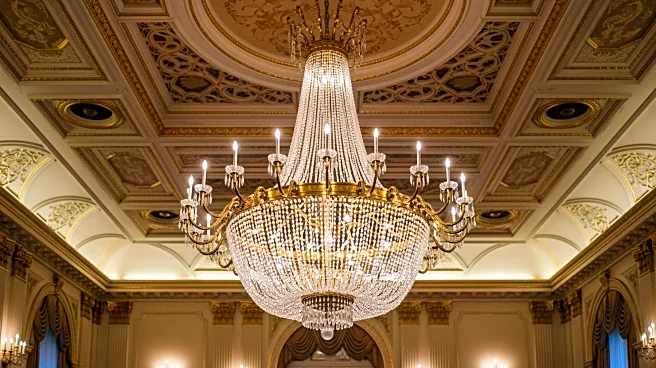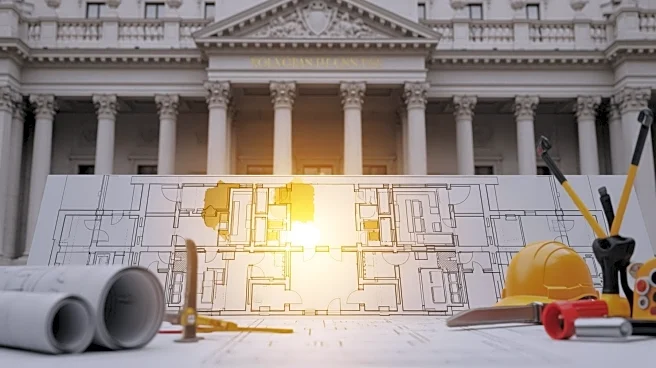What's Happening?
President Trump is set to begin construction on a $200 million ballroom at the White House in September. The 90,000-square-foot ballroom will expand the building's entertaining capacity and resemble the gilded
spaces of Trump's private clubs. The ballroom will occupy space currently housing the East Wing, with staff temporarily relocated. The design features gold and crystal chandeliers, Corinthian columns, and a checkered marble floor. The project, funded by Trump and private donors, aims to provide a large event space for future administrations, addressing the need for a permanent venue instead of temporary tents.
Why It's Important?
The construction of the ballroom represents a significant architectural addition to the White House, enhancing its capacity for hosting large events. It reflects President Trump's vision and influence on the historic site, potentially impacting its legacy and future use. The project may attract attention from political and cultural stakeholders, influencing public perception and historical preservation efforts. The involvement of private donors highlights the intersection of politics and private funding in government projects.
What's Next?
Construction is scheduled to begin in September, with ongoing collaboration between the White House, National Park Service, and other agencies. The project may face scrutiny regarding its impact on the White House's historical integrity and operational logistics. Future administrations will have access to the new ballroom, potentially influencing event planning and diplomatic engagements.
Beyond the Headlines
The ballroom's design and funding raise questions about the role of private influence in public spaces and the balance between modernization and historical preservation. It may spark discussions on the ethical implications of altering iconic government buildings and the cultural significance of such changes.
